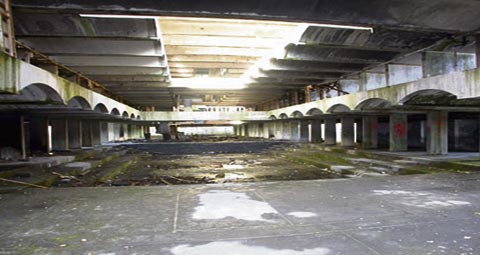BY Martin Dunlop | May 10 | ![]() 1 COMMENT
1 COMMENT ![]() print
print

Sale of St Peter’s Seminary goes ahead
Church site to be transformed into arts education centre through fundraising drive
The Catholic Church has agreed for the sale of St Peter’s Seminary in Cardross, Dunbartonshire, to a leading arts charity, in a move that aims to transform the dilapidated building into a new arts education centre.
St Peter’s was designed by Gillespie, Kidd and Coia and built in 1966 for Glasgow Archdiocese. It has been hailed as a modern ‘building of world significance’ but, since closing in 1980, concern has mounted over its future as the site became increasingly derelict and vandalised over time.
Arts charity NVA has now bought the building, named as one of the world’s most endangered sites by the World Monument Fund, on ‘conditional missives’ from the Catholic Church and plans to undertake a £10 million redevelopment plan to transform the site into a place for education, art displays, performances and exhibitions.
Ronnie Convery, a spokesman for Glasgow Archdiocese, welcomed the move.
“The NVA proposal represents the best solution for the site, allowing the acclaimed building to be consolidated and partly restored to the benefit of the local community,” Mr Convery said.
“The archdiocese is delighted that after many decades a realistic solution appears to be available.”
Angus Farquhar, creative director of NVA, outlined the plans for the former seminary, which will require a massive fundraising drive.
“This is the best chance this building has got,” he said. “This is the best way of doing it: we have two years to raise the money and we have the building, and now we have a free run at it, and can begin working with all kinds of national partners to make this happen. “The eventual purchase is for a price from the Catholic Church we are very happy with, and will not be disclosed.”












Why will the purchase price not be removed? I would have thought it was in the best interests of the Catholic Church, given its charitable status, to be open and transparent with regard to such matters? Surely this building, although a derelict wreck, belonged to the people whose financial contributions paid for it? I would have thought that the same people had a right to know how much (or how little) the Trustees of the Archdiocese had disposed of it.